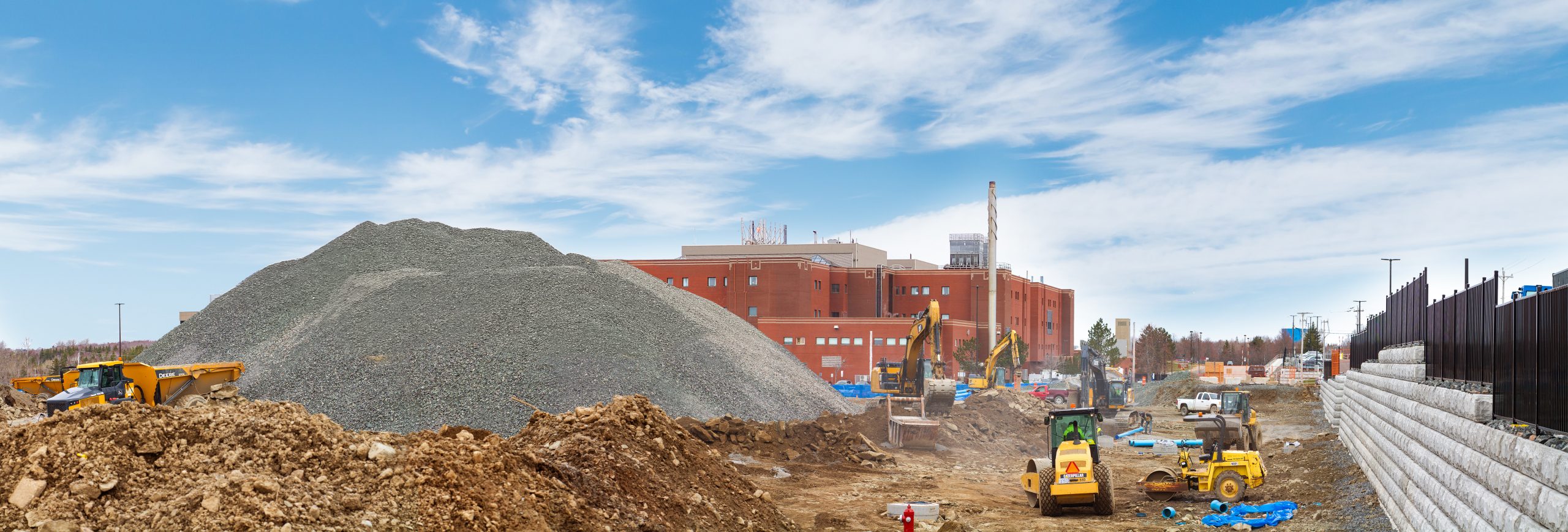Source: https://www.buildforce.ca/en/node/12000
Ottawa – Construction and maintenance activity in Nova Scotia is expected to increase between 2021 and 2023, driven by strong and broad-based demand across the province’s residential and non-residential sectors. This is according to the latest labour market forecast data released today by BuildForce Canada.
BuildForce Canada’s 2021–2030 Construction and Maintenance Looking Forward report for the province forecasts sectoral employment to remain high through 2026 before receding over the latter half of the scenario period. A rise in construction-sector employment of approximately 10% – or 2,600 workers – is expected to occur over the next few years before employment recedes slightly over the latter half of the decade.
“Construction activity in Nova Scotia was only moderately hindered by the impacts of COVID-19 in 2020, and the negative effects were largely confined to the residential and commercial markets,” says BuildForce Canada Executive Director Bill Ferreira. “An anticipated recovery in the residential sector, alongside a ramp-up in requirements related to numerous major health care, educational, roadwork, and engineering projects is expected to drive a strong expansion in construction employment across 2021 and 2022.”
Over the next 10 years, Nova Scotia’s construction industry is expected to see the retirement of nearly 8,700 workers – or about 28% of its 2020 labour force. Based on historical trends, the province’s industry could attract as many as 5,875 first-time new entrants aged 30 and younger from the local population over the same period.
“Nova Scotia’s population is aging, and its construction industry faces a shortfall of about 3,900 workers over the next decade,” says Ferreira. “It’s important for the construction and maintenance industry to reach out to younger people now and position construction as a career of choice.”
The development of skilled tradespersons in the construction industry takes years, and often requires participation in a provincial apprenticeship program. New registrations in the province’s 18 largest trade programs peaked at 1,280 in 2015, resulting in an increased supply of certified workers. Registrations have fluctuated over recent years since, but have remained around 900 registrations per year.
Based on projected new registrations and completion trends, several trades were identified as potentially at risk of undertraining the number of new journeypersons required by 2030. They include bricklayers, carpenters, heavy-duty equipment technicians, industrial electricians, industrial mechanics (millwrights), mobile crane operators, roofers, steamfitter/pipefitters, and welders. An ongoing commitment to training and apprenticeship development will remain necessary to avoid potential future skills shortages in the industry.
The COVID-19 pandemic has significantly complicated apprentice registration and completion rates in Nova Scotia. Limited data collected to date suggests that the pandemic has resulted in a steep decline in new registrations relative to employment. It has also imposed significant obstacles to the in-school delivery of training, testing, and certification. These impacts are likely to reduce the near-term numbers of new certified workers.
Building a sustainable and diverse labour force will require the construction and maintenance industry to increase recruitment from groups traditionally underrepresented in the current construction labour force, including women, Indigenous people, and new Canadians.
In 2020, there were approximately 3,650 women employed in Nova Scotia’s construction industry, of which 26% worked directly on construction projects. Of the 27,400 tradespeople employed in the industry, women made up only 3.5% of the total. Indigenous people accounted for approximately 5% of the total labour force in Atlantic Canada, which is equal to their share in the construction labour force. With about 81% of the industry’s Indigenous workers active in on-site construction, there could be further scope to increase the participation of Indigenous people in the construction trades. Increasing the participation rate of women and Indigenous people would go a long way to help the industry address its future labour force needs.
New Canadians currently comprise approximately 3.5% of Nova Scotia’s construction labour force. As provincial demographics point to declines in the number of younger workers available to enter the provincial labour force in the coming years, immigration will play an increasingly important role in the development of the province’s future workforce. Over the coming decade, the province is expected to welcome an average of 8,000 newcomers every year. This will make the immigrant population an important future source of labour force growth. Increasing the participation of new Canadians in the industry will be important to ensure the construction labour force remains adequate to the needs of the economy.
BuildForce Canada is a national industry-led organization that represents all sectors of Canada’s construction industry. Its mandate is to provide accurate and timely labour market data and analysis, as well as programs and initiatives to help manage labour force requirements and build the capacity and capability of Canada’s construction and maintenance industry. Visit www.constructionforecasts.ca.
For further information, contact Bill Ferreira, Executive Director, BuildForce Canada, at ferreira@buildforce.ca or 613-569-5552 ext. 2220.
This report was produced with the support and input of a variety of provincial construction and maintenance industry stakeholders. For local industry reaction to this latest BuildForce Canada report, please contact:
Trent Soholt
Executive Director
Nova Scotia Construction Sector Council
902-832-4761
Duncan Williams
President and CEO
Construction Association of Nova Scotia
902-468-2267
Funded by the Government of Canada’s Sectoral Initiatives Program.

